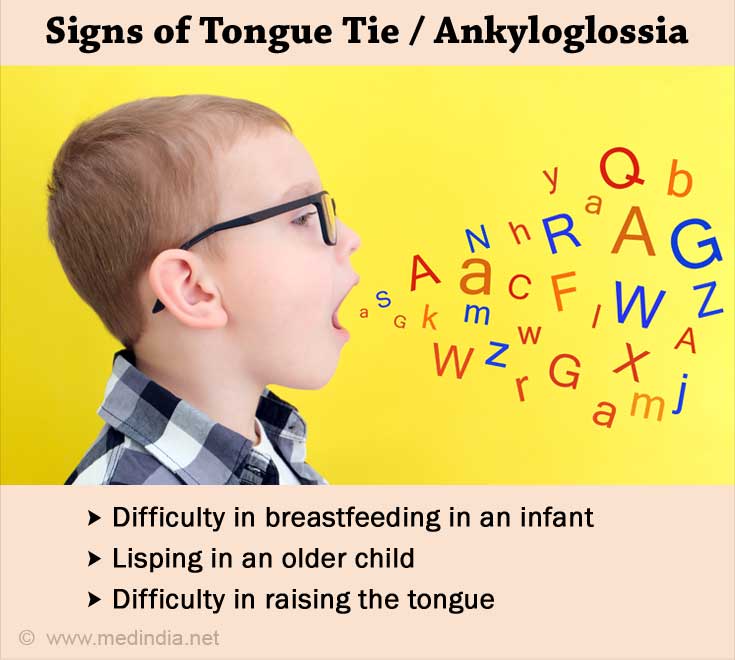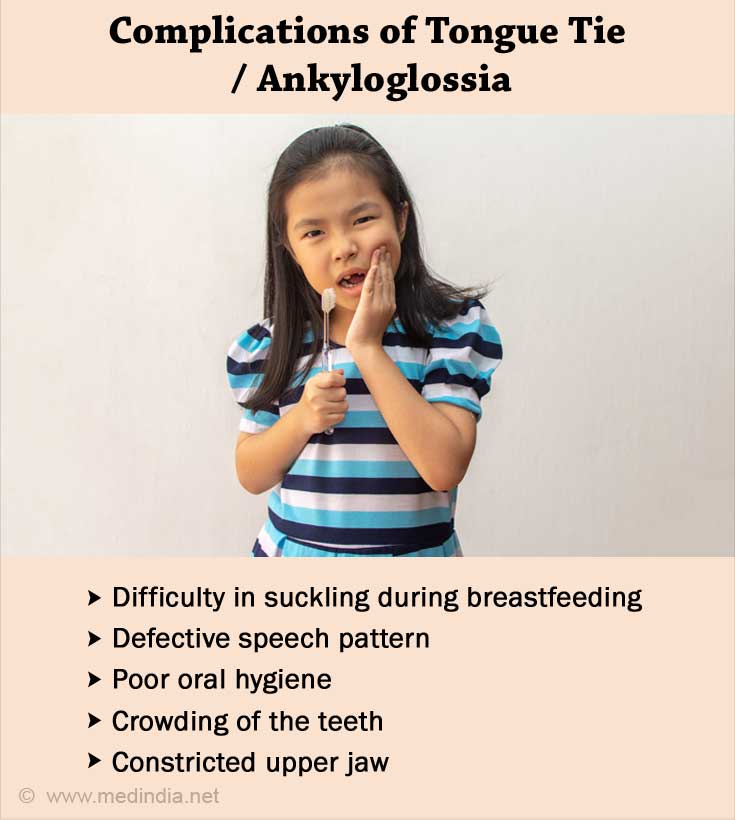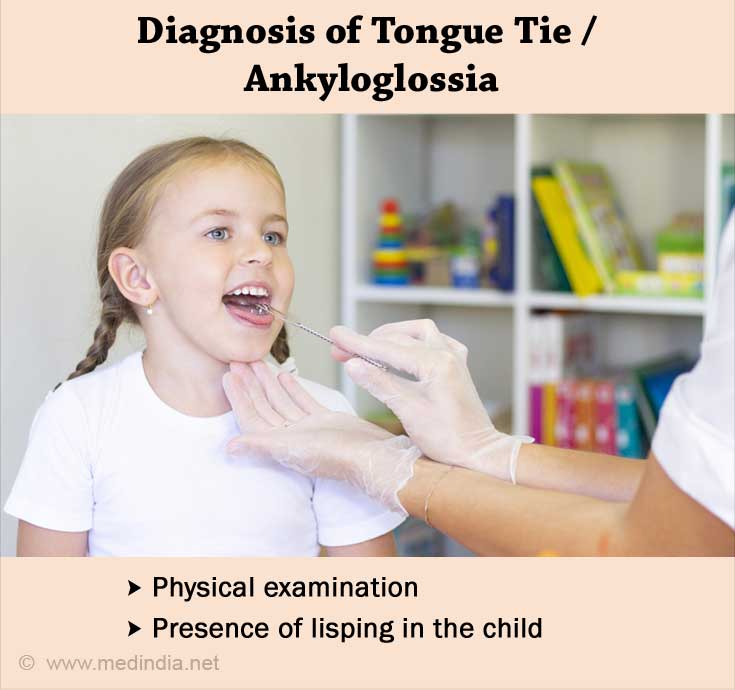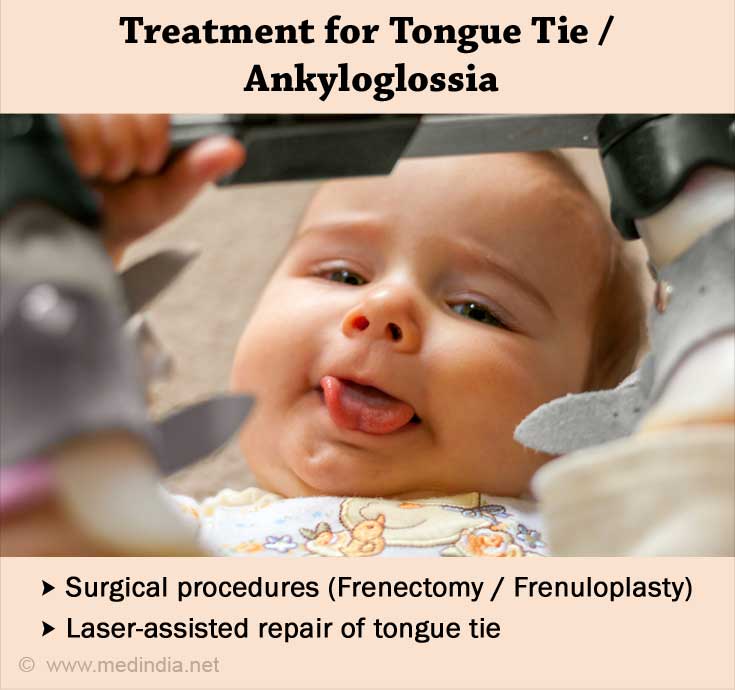- Prevalence, diagnosis, and treatment of ankyloglossia - (http://www.cfp.ca/content/53/6/1027.full.pdf)
- International Journal of Pediatric Otorhinolaryngology - (http://www.ijporlonline.com/article/s0165-5876%2800%2900359-1/abstract)
- Ankyloglossia: Assessment, Incidence, and Effect of Frenuloplasty on the Breastfeeding Dyad - (http://pediatrics.aappublications.org/content/110/5/e63.full)
- Horton CE, Crawford HH, Adamson JE, Ashbell TS (1969). "Tongue-tie". The Cleft palate journal 6: 8-23. PMID 5251442
Tongue Tie / Ankyloglossia
Tongue tie, also known as Ankyloglossia, is a congenital disorder that can affect a variety of functions from speech to feeding.
Tongue tie is a condition arising from the total or partial fusion of the tongue to the floor of the mouth.
The tongue is a muscular organ that has a variety of significant roles from the development of speech to aiding in feeding. It is a mobile organ that is attached to the base or floor of the mouth by a thin band of mucosa known as the lingual fraenum. In case the lingual fraenum remains short, a tongue tie may develop.
Ankyloglossia develops at or before birth or within the first month of birth regardless of the cause. The exact cause is unknown; however, genetics could be a factor as tongue tie has been seen to run in families.
The prevalence of ankyloglossia reported in the literature varies from 0.1% to 10.7%. In general, males seem to be more affected than females.
Ankyloglossia is a congenital disorder that can have far-reaching consequences starting from difficulty in breastfeeding, to the development of speech and so on. The condition may be graded from mild to complete depending on the degree to which the tongue is fused to the floor of the mouth.
Mild cases of tongue tie may not require treatment. More severe cases may need surgical correction.
Signs of Tongue Tie
Some signs which a parent should consider as red flags are:

- Difficulty in breastfeeding in an infant.
- Lisping in an older child.
- Difficulty in raising the tongue to the upper teeth or past the lower teeth.
- A tongue that appears notched when stuck past the front teeth.
All these signs should alert the parents to the possibility of a tongue tie.
Complications of Tongue Tie
An infant with a tongue tie will cause great discomfort to the mother during breastfeeding. During breastfeeding, the tongue is placed on the lower gum followed by sucking. In the case of ankyloglossia, this mobility is restricted. Therefore, the infant may bite instead of suckling causing significant pain to the mother. Added to this is the difficulty in swallowing which can compromise the child’s nutrition.

The pronunciation of certain sounds such as T, Z, Th requires contact between the tip of the tongue and the palate. Because the mobility of the tongue is restricted, the T’s and Z’s will sound like S’s. If the speech pattern is not corrected at an early age, it may become a habit.
The tongue allows the removal of food debris from the mouth; the restricted mobility in ankyloglossia compromises access to the inner surface of the teeth. This compromises oral hygiene resulting in
The tongue is a muscular organ that also affects the growth of the upper and lower jaws as well as the position of your teeth. A child with ankyloglossia may experience crowding of the upper and spacing in lower teeth, as well as a constricted upper jaw.
Diagnosis of Tongue Tie/Ankyloglossia
Diagnosis of tongue tie is reached based on the history and a thorough examination by the surgeon or pediatrician.
It is difficult to diagnose a case of a tongue tie by visualizing the tongue. The pediatrician or surgeon will most likely place a finger under your child’s tongue to detect the degree of abnormality.

For older children, the diagnosis can be further confirmed by a history of lisping, the doctor may ask your child to draw his tongue out and move it from side to side to confirm the degree of restriction.
Some criteria that may indicate that surgery may not be required are:
- The tip of the tongue can be protruded outside the mouth without clefting at the tip.
- There should be no strain while sweeping the upper and lower lip with the tip of the tongue.
- When the tongue is retruded, it should not blanch the tissue on the inner aspect of the lower anterior teeth.
- The tongue should not cause excessive force on the lower incisors.
- There should be no difficulty with normal swallowing.
- The lingual frenum should not create a space between the lower front teeth.
- In infants, the underside of the tongue should not exhibit signs of trauma.
- The frenum should not prevent an infant from nursing.
- Older children should not experience difficulty with speech due to the tongue tie.
Treatment for Tongue Tie / Ankyloglossia
There are a variety of treatment modalities that can be used to repair this congenital defect.
Based on the severity of the tongue tie and the degree to which the condition is affecting oral functions, the surgeon will decide if treatment is required or not. The earlier concept of wait-and-watch has been replaced with the belief that the sooner the surgical correction performed, the lesser are the possible complications and the easier the surgical procedure.

Frenectomy
In the case of an infant with a mild-to-moderate form of the condition, a simple surgical procedure known as a frenectomy may suffice. During this procedure, the surgeon will inject
Frenuloplasty
In the case of an older child or where more extensive repair is required, a frenuloplasty procedure may need to be performed. The procedure may be performed under general anesthesia. After the procedure has been completed, the site is closed with resorbable sutures that absorb on their own with time as the tongue heals. This offers the advantage of limiting the surgical intervention to only one visit instead of a second to remove the sutures.
Laser-assisted Repair of Tongue Tie
Your surgeon may also opt to perform the procedure with the assistance of a laser. This treatment option has the advantage of being relatively bloodless and is also believed to cause faster healing.
Complications of Surgery
Surgical correction of tongue tie is a relatively safe procedure. However, as is the case with all surgeries the chances of complications do exist and include bleeding, infection, damage to the salivary glands that lie on the floor of the mouth, and scaring which may need a repeat procedure.








